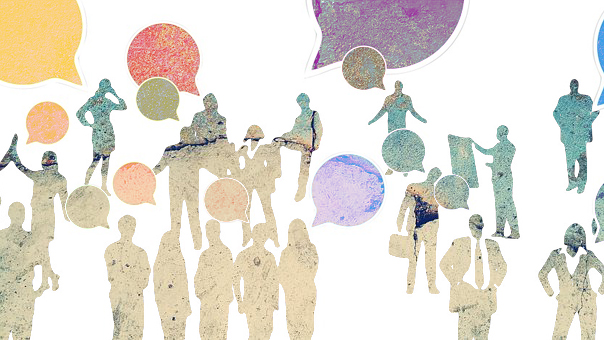From February through June, Mosaic’s Intercultural Team offered a monthly book study on Drew Hart’s second book, Who Will Be A Witness? Pastors and leaders from across the conference gathered over Zoom to respond to Hart’s challenge and invitation.
Who Will Be A Witness? outlines a biblical and historical case for why Christians should engage in the public witness of racial and economic justice. Hart roots each of his claims in the “revolutionary public witness of Jesus” as a way to remind Christians of how Jesus’ life, death, and resurrection informs our witness to the world. His challenge and invitation to the reader is that we too can embody “the good news of Jesus through radical grassroots action as local congregations” in the face of the systemic and interlocking injustices of racism, militarism, and economic exploitation (p. 41).

I must confess, from my perspective, Hart’s challenge was easier to grasp than his invitation at first. In chapter three, Hart shares a personal story about when he watched white students at his Christian college leave in mass protest during a chapel service led by students of color. Hart recalls his anger and disappointment at how his white peers opted out of a challenging conversation on race and Christian faith. He noticed how when the conversation got difficult, his white peers collectively decided that their racial comfort was more important than their shared Christian identity with students of color like himself (pp. 101-106).
I believe the challenge for our predominantly white book club was similar. How do we not internally check out when the conversation gets difficult? How might our shared commitment to following Jesus help ground our understanding of racial justice?
One way we leaned into the conversation was to sit in creative tension with what we were reading in Who Will Be A Witness? with our own lives. We talked about what faith-based grassroots activism might look like in our respective ministry contexts. Some of us talked about how our preaching and teaching can include more books and resources from people of color as a way to freshen our readings of Scripture. Others of us shared experiences about learning how to engage the local school board on issues related to race and equity. A few of us tossed around the wild idea of liquidating our congregation’s endowment accounts as an act of Jubilee.
Sitting in this creative tension between the book and our own lives of ministry is one of the most fruitful outcomes of this book study. It is my sincere hope that more opportunities for shared learning are available in the future.


 “The extent to which we are surprised by the results of the election demonstrates the poverty of our relationships. The extent to which we don’t understand the need for immigration reform demonstrates the poverty of our relationships.” As I listened to
“The extent to which we are surprised by the results of the election demonstrates the poverty of our relationships. The extent to which we don’t understand the need for immigration reform demonstrates the poverty of our relationships.” As I listened to  One of the things I love about SLT is that it turns people of authority into students for a few days. The ones I’m used to seeing up front at conference and denominational events are sitting and listening, taking notes and asking questions. At SLT, we participants — the majority of us white church leaders with a significant amount of agency in our daily lives — learned from keynote speakers Dr. Cleveland and
One of the things I love about SLT is that it turns people of authority into students for a few days. The ones I’m used to seeing up front at conference and denominational events are sitting and listening, taking notes and asking questions. At SLT, we participants — the majority of us white church leaders with a significant amount of agency in our daily lives — learned from keynote speakers Dr. Cleveland and  Using illustrations from scripture and their lives, the speakers explored the depth of race’s impact on our society. They explored how our racialized society maintains itself and why it’s so hard for white people to see and confront racism — why we need people with a “view from the underside,” in Hart’s words, to recognize it. They called the largely white audience to recognize how we’ve been socialized into racial bias, and that Jesus never called us to shame but to repentance and new life together. Dr. Cleveland showed us by example how to notice privilege in our own lives. We were being tutored in how to reach beyond ourselves as a demonstration of respect and also of our need.
Using illustrations from scripture and their lives, the speakers explored the depth of race’s impact on our society. They explored how our racialized society maintains itself and why it’s so hard for white people to see and confront racism — why we need people with a “view from the underside,” in Hart’s words, to recognize it. They called the largely white audience to recognize how we’ve been socialized into racial bias, and that Jesus never called us to shame but to repentance and new life together. Dr. Cleveland showed us by example how to notice privilege in our own lives. We were being tutored in how to reach beyond ourselves as a demonstration of respect and also of our need. But it’s not just that we need each other’s perspective, or that we need to learn from one another to understand Jesus’ message. No, we each have a role to play in dismantling racism, wherever we are. When we’re uncomfortable we can benefit by staying at the table and continuing the conversation. In fact, that’s what we were doing at the conference: listening, learning, checking our assumptions and discerning our next steps. One conference attendee asked Drew Hart, “What can I do about racism in my predominantly white community?” and Hart responded, “You’re right at the center of the action!” Throughout the conference I heard calls to learn and act right where we are, building relationships with our literal neighbors. I attended a workshop where we practiced listening to people we disagreed with. In another workshop we discussed what it means to “seek the peace of the city” where you are (Jer. 29:7) and spent some time brainstorming for our own contexts.
But it’s not just that we need each other’s perspective, or that we need to learn from one another to understand Jesus’ message. No, we each have a role to play in dismantling racism, wherever we are. When we’re uncomfortable we can benefit by staying at the table and continuing the conversation. In fact, that’s what we were doing at the conference: listening, learning, checking our assumptions and discerning our next steps. One conference attendee asked Drew Hart, “What can I do about racism in my predominantly white community?” and Hart responded, “You’re right at the center of the action!” Throughout the conference I heard calls to learn and act right where we are, building relationships with our literal neighbors. I attended a workshop where we practiced listening to people we disagreed with. In another workshop we discussed what it means to “seek the peace of the city” where you are (Jer. 29:7) and spent some time brainstorming for our own contexts.

 As we go through the steps of identifying and listening to those who have been marginalized, partnering locally and globally, sharing the gospel and planting churches, how might the Holy Spirit be inviting us to explore beyond our patterns, stereotypes and intuition in order to develop alternate ways of seeing and experiencing reality. What might we learn from another’s point of view?
As we go through the steps of identifying and listening to those who have been marginalized, partnering locally and globally, sharing the gospel and planting churches, how might the Holy Spirit be inviting us to explore beyond our patterns, stereotypes and intuition in order to develop alternate ways of seeing and experiencing reality. What might we learn from another’s point of view?


 “The radical nature of hope”
“The radical nature of hope”